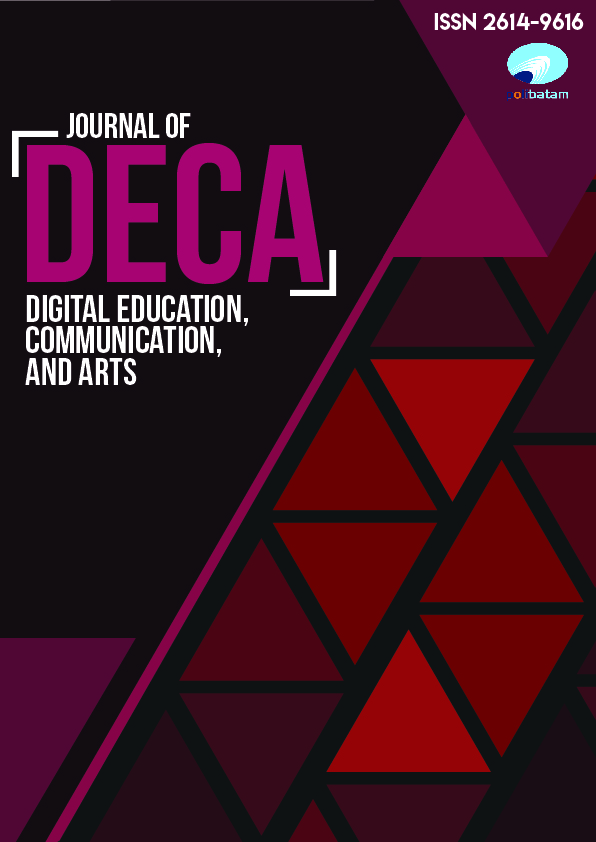ANALISIS MAKNA DENOTATIF DAN KONOTATIF DALAM FILM UPIN & IPIN EPISODE KENANGAN MENGUSIK JIWA
DOI:
https://doi.org/10.30871/deca.v3i01.1986Kata Kunci:
connotative meaning, denotative meaning, animationAbstrak
Representations of public life in recalling past events or history can be found, among others, in 3D animated films. An interpretation of connotative meaning, as the second layer meaning, arises when a symbol is associated with its psychological aspects, such as feelings, emotions, or beliefs, which are closely related to culture, knowledge, and history. This study aims to interpret symbols in the Kenangan Mengusik Jiwa episode of Upin & Ipin animated film for their denotative and connotative meaning to better understand the context of the story and the moral message conveyed. A questionnaire was used in this research to increase validity. In processing questionnaire data, a calculation is conducted using the Likert scale. The results of the study indicate that the main moral message conveyed in this episode is to never forget history or established culture. This interpretation is supported by results from questionnaire data.
Unduhan
Referensi
Anonim. (2010). http://www.arkib.gov.my/web/guest/datuk-aziz-sattar. Diakses pada 28 April 2017.
Buana, S. (2009). Adab Bertamu dan Memuliakan Tamu. https://muslim.or.id/1546-adab-bertamu-dan-memuliakan-tamu.html. diakses pada 5 Mei 2017.
Kurniawan. (2001). Semiologi Roland Barthes. Jakarta: Gramedia.
Rahmat P.S. (2009). Penelitian Kualitatif. Equilibrium, 5.
Rawung, L. (2013). Analisis Semiotika Pada Film Laskar Pelangi. Journal Acta Diurna, 1(4).
Sobirin, N. (2015). Hang Tuah Pahlawan Melayu Yang Harus Bertarung Dengan Sahabat. https://daerah.sindonews.com/read/1046522/29/hang-tuah-pahlawan-melayu-yang-harus-bertarung-dengan-sahabat-1442678504. Diakses pada 18 April 2017.
Widyaningrum S. (2012). Rasisme Dalam Film Fitnah (Skripsi). Yogyakarta: Jurusan Ilmu Komunikasi FISDIP Universitas Pembangunan Nasional "Veteran".
Unduhan
Diterbitkan
Terbitan
Bagian
Lisensi
Hak Cipta (c) 2020 Juprinedi Juprinedi, Arta Uly Siahaan, Cahya Miranto

Artikel ini berlisensi Creative Commons Attribution-NonCommercial-NoDerivatives 4.0 International License.


